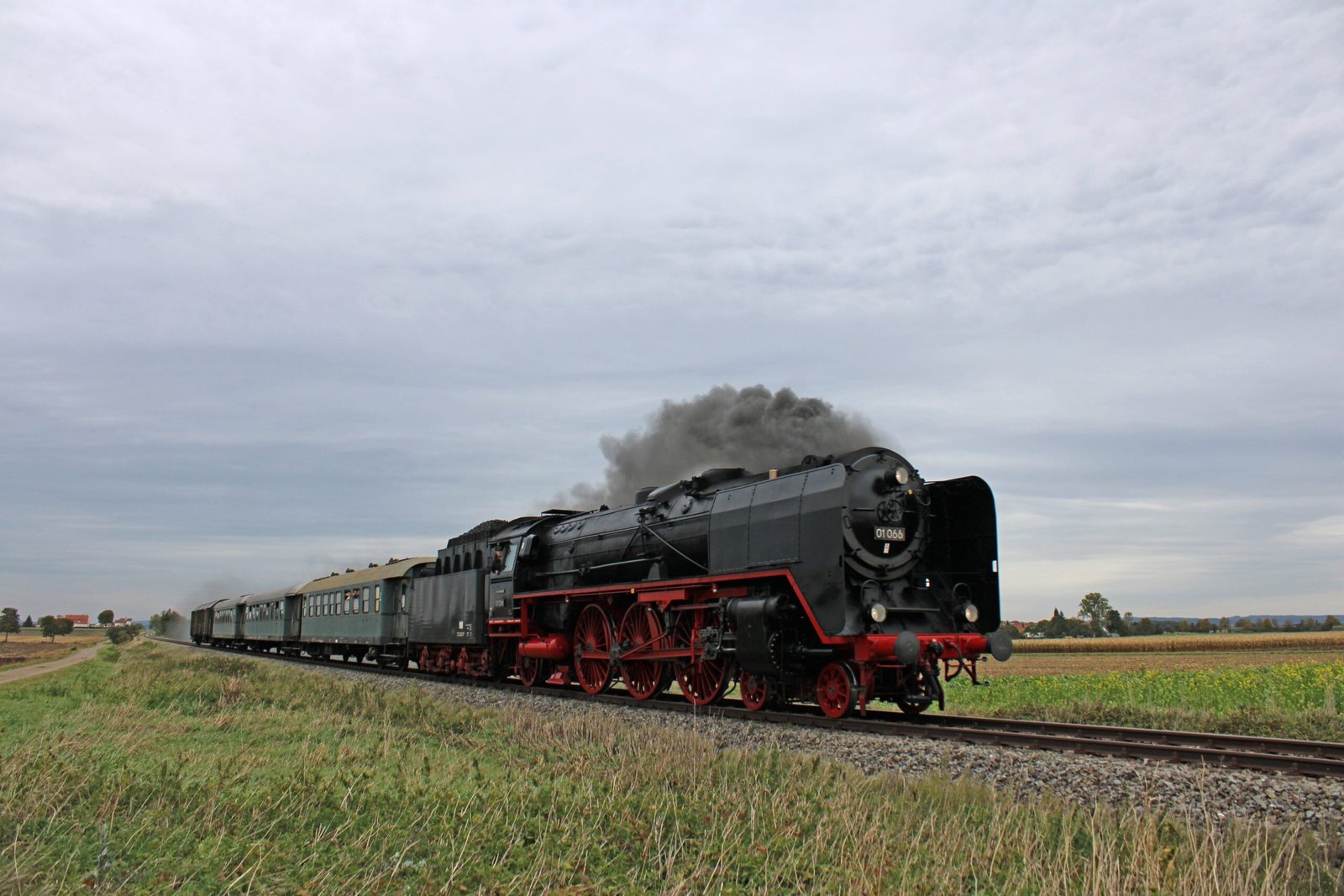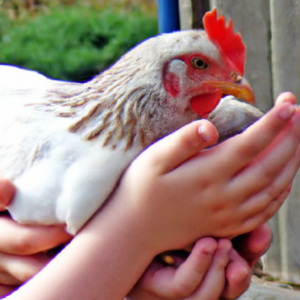
Have you ever wondered how to train your chickens to return to the coop during the day? It may seem like a daunting task, but with the right techniques, it can be quite simple. In this article, we will explore the various methods you can use to train your chickens and ensure that they always find their way back to the coop before dusk. From using treats to establishing a routine, we will provide you with practical tips that will make this training process enjoyable for both you and your feathered friends. So, let’s get started and create a coop full of happy and well-trained chickens!

Importance of Training Chickens
Training chickens is an essential aspect of raising a healthy and productive flock. By providing proper training, you can create a safe environment, prevent the loss of chickens, and maintain discipline within the coop. Not only does training benefit the well-being of your chickens, but it also contributes to your overall success as a chicken keeper.
Understanding Chicken Behavior
Before delving into the training process, it is crucial to understand the behavior of chickens. Chickens have instinctual behaviors, social hierarchies, and the ability to form habits. By understanding these aspects, you can tailor your training methods to effectively communicate with your feathered friends.
Instinctual Behavior
Chickens, being descendants of wild jungle fowl, possess natural instinctual behaviors. These behaviors include foraging for food, roosting at night, and establishing a pecking order. By understanding these behaviors, you can work with them during the training process, making it easier to communicate and establish desired behaviors.
Social Hierarchy
Within a flock, chickens establish a social hierarchy. They use pecking order to establish dominance and maintain harmony. As a chicken keeper, it is important to be aware of this hierarchy and consider it when training your chickens. By understanding social dynamics, you can work with the natural order and ensure a smooth training process.
Habit Formation
Chickens, like any other creatures, have the ability to form habits. By consistently reinforcing desired behaviors, you can help your chickens develop positive habits, making training more efficient. By capitalizing on their ability to develop habits, you can establish routines that support desired behavior and make their training routine second nature.

Establishing the Coop as a Safe Haven
Creating a safe haven within your coop is a crucial step in training your chickens. By providing a secure coop, adequate shelter, and comfortable nesting areas, you can establish an environment in which your chickens feel safe and protected.
Designing a Secure Coop
A secure coop is essential in ensuring the safety of your chickens. It should be well-constructed, with sturdy walls and a predator-proof design. By creating a safe and secure environment, you can minimize the risk of external threats and provide your chickens with a sense of security.
Providing Adequate Shelter
Adequate shelter is vital for your chickens’ well-being. The coop should protect them from adverse weather conditions, such as rain, wind, and extreme temperatures. By providing an ample shelter, you can ensure the comfort and health of your flock, creating an environment where they feel protected and secure.
Ensuring Comfortable Nesting Areas
Comfortable nesting areas are essential for your chickens to lay their eggs. Cozy nesting boxes with suitable bedding materials make your chickens feel safe while they engage in their natural nesting behavior. By providing comfortable nesting areas, you foster a sense of security and contentment within your flock.
Using Positive Reinforcement Techniques
Positive reinforcement techniques are highly effective when training chickens. By rewarding desired behavior, utilizing treats, and offering verbal praise and affection, you can encourage and reinforce the behaviors you want to see in your chickens.
Rewarding Return to the Coop
When training chickens to return to the coop during the day, it is important to reward their successful return. Have a designated treat or reward waiting for them inside the coop. This will positively reinforce the desired behavior of returning to the coop, making them more likely to repeat the behavior in the future.
Utilizing Treats
Treats can be a powerful tool in training chickens. By using treats that your chickens find enticing, such as mealworms or small pieces of fruit, you can motivate them to perform desired behaviors. For example, you can use treats to lure them into the coop or to encourage them to come when called. The key is to associate treats with the desired behavior, creating a positive connection and reinforcing the behavior.
Verbal Praise and Affection
Chickens, despite popular belief, are social creatures that respond well to positive interactions. Use verbal praise and affectionate gestures, such as gentle petting, to reward and reinforce desired behaviors. By expressing your happiness and approval, you create a bond with your chickens and encourage them to continue exhibiting the desired behavior.

Implementing Training Rituals
Establishing training rituals can help create a structured routine and clear expectations for your chickens. By establishing daily routines, creating auditory cues, and using visual markers, you can train your chickens effectively while keeping them engaged and motivated.
Establishing Daily Routines
Chickens thrive in a structured environment. Establishing daily routines, such as specific feeding times or regular training sessions, helps your chickens develop a sense of predictability and security. By following a consistent schedule, your chickens will understand what is expected of them, making it easier to train and reinforce desired behaviors.
Creating Auditory Cues
Auditory cues can be a valuable tool in training chickens. For example, you can use a specific sound or command to signal feeding time or to call them back to the coop. By consistently using these auditory cues, your chickens will associate the sound with the desired behavior, making it easier to communicate and train effectively.
Using Visual Markers
Visual markers can also aid in training chickens. For instance, you can use brightly colored flags or specific objects to mark specific areas or actions. By associating these visual markers with the desired behavior, you can guide your chickens’ attention and reinforce the behavior you want to see.
Working with the Chickens’ Natural Instincts
Harnessing the chickens’ natural instincts can make the training process smoother and more effective. By exploiting their foraging instinct, targeting their nighttime roosting behavior, and satisfying their need for food and water, you can work with their innate behaviors to achieve desired outcomes.
Harnessing the Foraging Instinct
Chickens have a strong foraging instinct. By providing opportunities for them to engage in natural foraging behaviors, such as scattering food or using treat-dispensing toys, you can channel their energy and focus into desired activities. This not only keeps them mentally stimulated but also reinforces positive behaviors.
Targeting Nighttime Roosting Behavior
Chickens instinctively seek a safe place to roost at night. By providing comfortable roosting spots within the coop, you can guide their natural behavior and encourage them to return to the coop without hassle. Ensure the roosts are secure, elevated, and easily accessible, imitating their natural preference for perching higher at night.
Exploiting the Need for Food and Water
Chickens have basic needs for food and water. By ensuring a consistent and readily available supply of both, you can use their need for sustenance to your advantage during training. For example, you can strategically place food or water sources near the coop entrance to encourage them to return promptly after their outdoor activities.
Addressing Common Training Challenges
During the training process, you may encounter common challenges such as uncooperative chickens, fear or anxiety issues, and distractions or temptations. However, with patience and appropriate strategies, these challenges can be overcome.
Dealing with Uncooperative Chickens
Not all chickens will readily respond to training. Some may be naturally more independent or less inclined to follow commands. In such cases, it is important to be patient and persistent. By consistently using positive reinforcement techniques and adjusting your strategies to suit individual personalities, you can slowly encourage cooperation and desirable behavior.
Resolving Fear or Anxiety Issues
Chickens can experience fear or anxiety, which can hinder their training progress. If your chickens show signs of fear or anxiety, take a step back and assess the situation. Slowly introduce training in a calm and controlled environment, gradually building their confidence. Creating a positive association with the training experience can help alleviate fear or anxiety and promote a willingness to learn.
Overcoming Distractions and Temptations
Chickens can easily be distracted by their natural curiosity or enticing stimuli in their environment. To overcome distractions and temptations, it is important to create a training environment that minimizes potential distractions. Choose a quiet location, away from loud noises or other animals. Gradually increase the level of distractions as your chickens become more proficient in their training.
Consistency and Patience in the Training Process
Consistency and patience are key when training chickens. The training process requires time, effort, and a gradual approach. By consistently reinforcing desired behaviors, reinforcing consistent behavior, and allowing for individual learning pace, you can build a strong foundation for effective training.
Gradual Training Approach
When training chickens, it is important to start with simple tasks and gradually increase the level of difficulty. Begin by rewarding simple behaviors, such as returning to the coop on command, before moving onto more complex tasks. This gradual approach allows your chickens to build confidence and become comfortable with each step of the training process.
Reinforcing Consistent Behavior
Consistency is essential in chicken training. Reinforce the consistent behavior you wish to see in your chickens by consistently rewarding and praising them. Consistency in your actions and responses helps your chickens understand what is expected of them, reinforcing the desired behavior and making it more likely to be repeated.
Allowing for Individual Learning Pace
Each chicken is unique and may learn at a different pace. Some may quickly pick up on training cues and behaviors, while others may take more time. It is important to be patient and allow each chicken to learn at their own pace. By acknowledging and respecting their individual learning styles, you can create a positive and effective training experience for all members of your flock.
Monitoring Progress and Adjusting Training as Needed
The training process requires ongoing monitoring and adjustment. By observing behavior patterns, identifying areas needing improvement, and introducing advanced training techniques, you can continually refine your training methods to achieve desired outcomes.
Observing Behavior Patterns
Regularly observing your chickens’ behavior patterns is crucial in assessing their progress. Pay attention to how they respond to training cues and whether they are consistently exhibiting the desired behaviors. By monitoring their behavior closely, you can identify areas that need improvement and make necessary adjustments to your training strategies.
Identifying Areas Needing Improvement
No training process is perfect, and there will always be areas needing improvement. Identify specific behaviors or challenges that require further attention and focus your efforts accordingly. By targeting these areas, you can tailor your training techniques to address specific needs, further promoting the progress of your flock.
Introducing Advanced Training Techniques
As your chickens become more proficient in their training, you can introduce advanced techniques to further enhance their skills and abilities. For example, you can teach them to perform specific tricks or advanced commands. By constantly challenging your chickens, you keep their minds engaged and maintain their enthusiasm for learning.
Closing Thoughts
The benefits of training chickens extend beyond behavior control. Not only does training create a safe and harmonious environment in the coop, but it also allows you to build a strong bond with your feathered friends. By investing time and effort into training, you contribute to the overall well-being and productivity of your flock. So, embrace the training process, be patient, and watch as your chickens thrive under your guidance.







